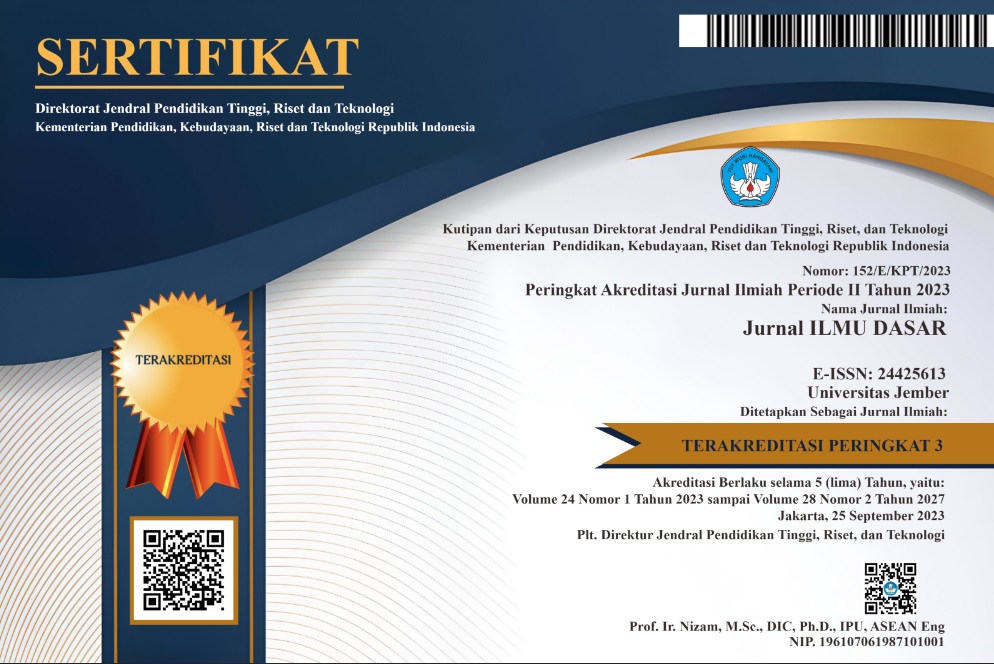Characterization Physiology and Molecular Bacteria Symbiont- Entomopathogenic Nematodes based of Gene Sequences Encoding the 16S rRNA District of Bromo Probolinggo
DOI:
https://doi.org/10.19184/jid.v18i1.2723Keywords:
Bacterial symbionts-entomopathogenic nematodes, physiological characterization, Bacillus strain toyonensis BCT7112, Bacillus cereus ATCC 14579Abstract
This study aims to identify entomopathogenic nematodes symbiotic bacteria phenotypically and based on the gene encoding 16S rRNA sequences. Bacterial symbionts of entomopathogenic nematodes, obtained from isolates from the area Wonokerto (WN01) and isolates Sukapura (SP01), Bromo, Probolinggo, two symbiont bacteria was found in entomopathogenic nematodes Steinernema sp. The method used in this study are: the isolation of entomopathogenic nematodes Steinernema sp. and bacterial symbionts conventionally for the identification of phenotypically, after the characterization of bacterial isolates, the isolation of genomic DNA, 16S rRNA PCR, DNA purification and DNA sequence analysis. The results based on phenotypic characterization showed that isolates WN01 and SP01, yellowish white, gram positive, negative bioluminenscene, catalase positive, can not hydrolyze urea, and also can not produce H2S. The results of the gene encoding 16S rRNA sequence can be deduced WN01 isolates have in common with the bacteria Bacillus strain toyonensis BCT 7112, while the SP01 isolates have in common with the bacteria Bacillus strain cereus ATCC 14 579.








